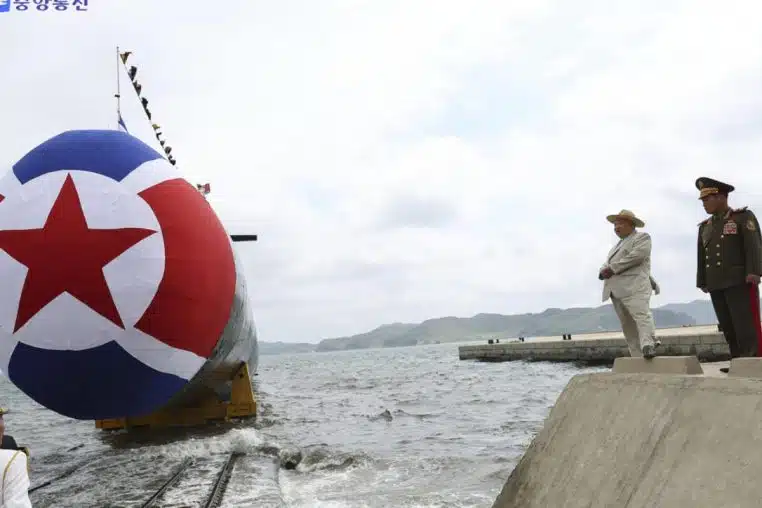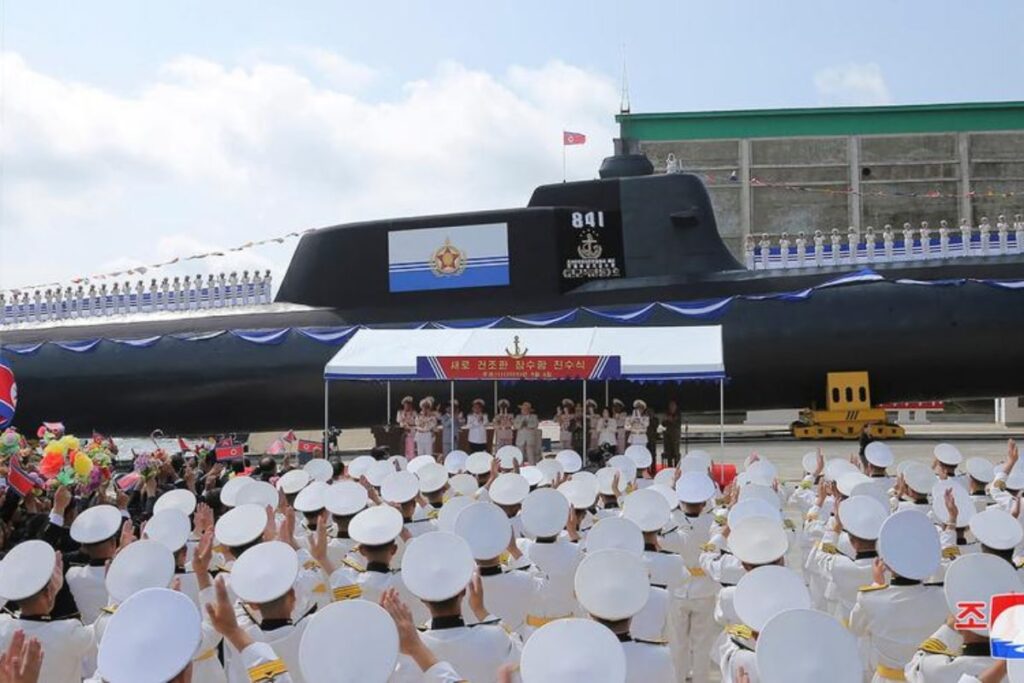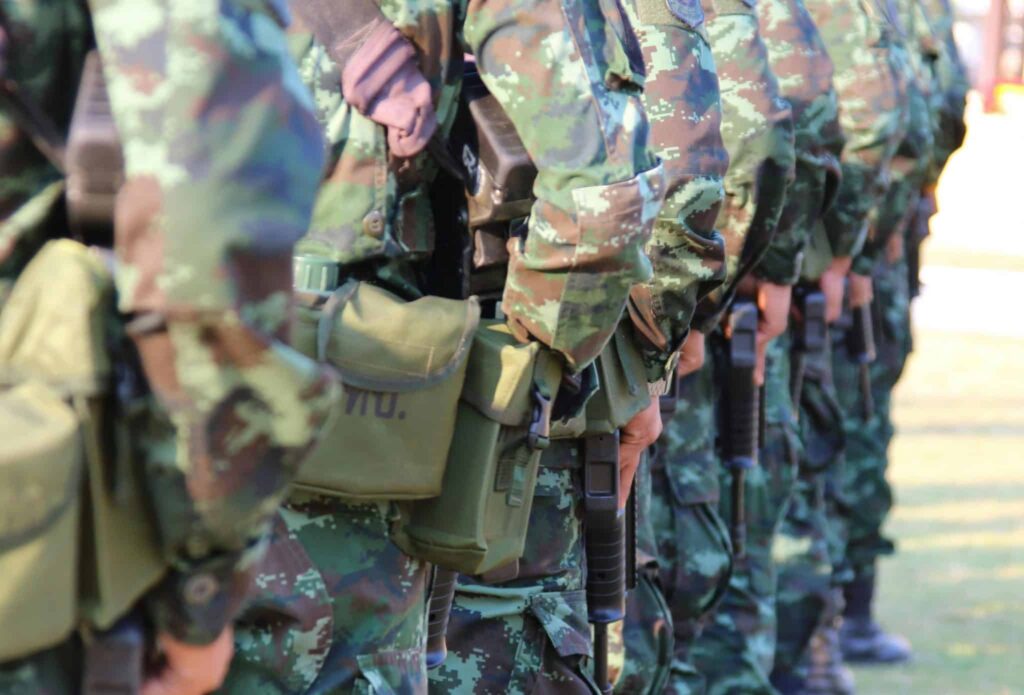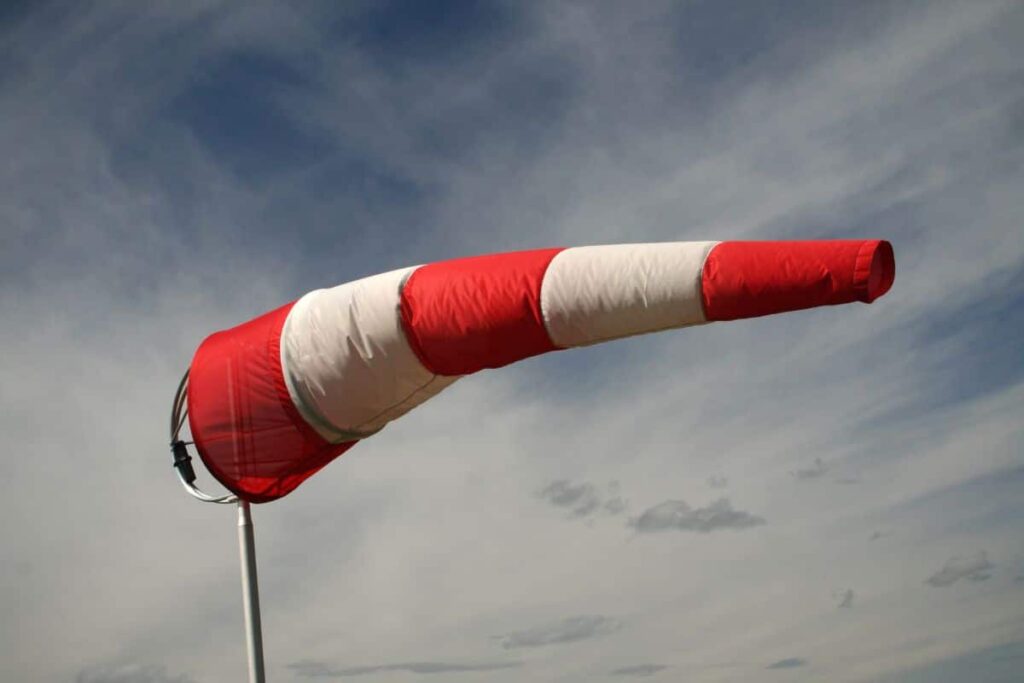North Korea is moving closer to the select group of nations equipped with a nuclear-powered submarine. This military development, which particularly concerns the United States and its allies, could alter the strategic balance in the Asia-Pacific region.
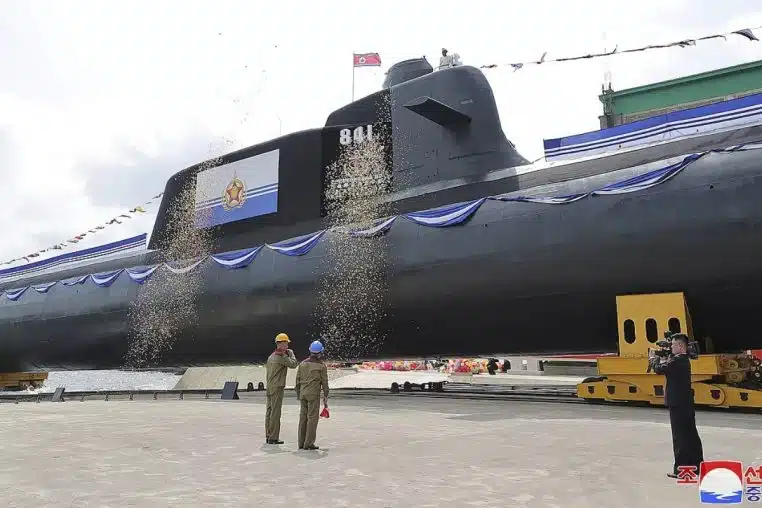
🚢 A Submarine That Disrupts the Balance of Power
For the first time, North Korea has unveiled a nuclear-powered submarine under construction. This warship, described as a “strategic guided missile submarine,” was showcased during a visit by Kim Jong Un to one of the country’s major shipyards. According to the North Korean state news agency, this project is part of the leader’s aim to strengthen the country’s navy into an elite nuclear force.
This development represents a major shift in the military capabilities of North Korea. Until now, Pyongyang had an aging submarine fleet, primarily consisting of diesel-electric vessels. The introduction of a nuclear-powered submarine would provide the country with a heightened deterrent capability by allowing it to launch strategic missiles while remaining stealthy underwater for extended periods.
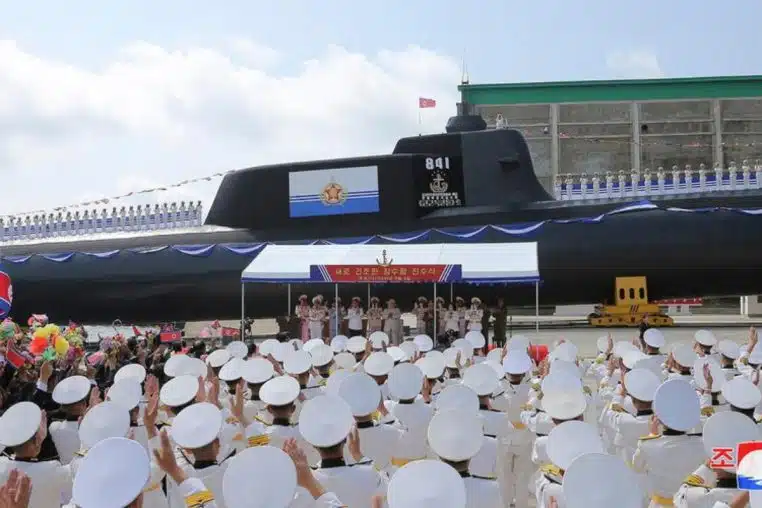

💥 A Direct Threat to the United States and Its Allies
According to Moon Keun-sik, a South Korean expert, the submarine under construction is expected to be a vessel weighing 6,000 to 7,000 tons, capable of carrying up to 10 missiles. The use of the term “strategic guided missiles” suggests that it could potentially involve nuclear-capable weapons, posing a direct threat to South Korea, Japan, and the United States.
This development raises particular concerns in Washington. Brian Hughes, spokesperson for the U.S. National Security Council, has reaffirmed the United States’ commitment to the complete denuclearization of North Korea, but the revelation of this submarine presents new diplomatic and strategic challenges.
If North Korea succeeds in completing this project, it could test and deploy this submarine within one to two years, representing a significant advancement in its military capabilities. Adding this technology to its arsenal could further complicate any attempts at negotiation or de-escalation in the region.
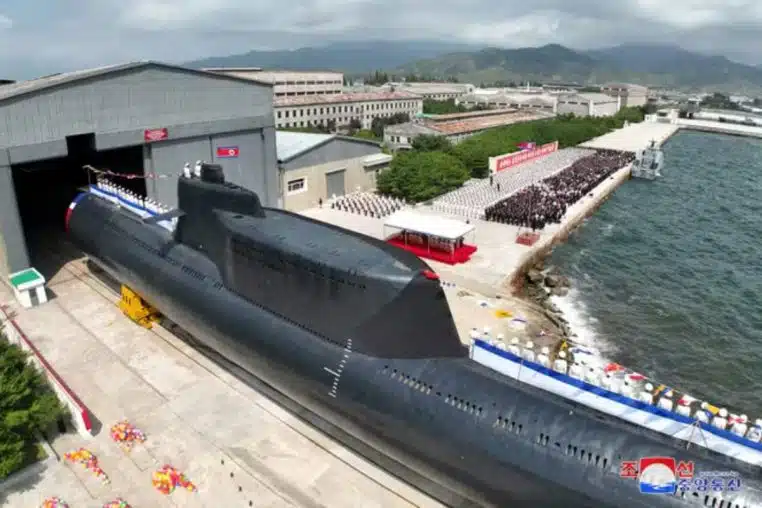

🔧 Foreign Technological Support in Question
One question remains: how has North Korea managed to develop such a submarine? Some experts suggest that Russia may have provided technological assistance in exchange for North Korean military support in the conflict in Ukraine.
Moon Keun-sik proposes that Pyongyang may have received advanced knowledge of building a nuclear reactor for this submarine in exchange for conventional weaponry supplies and troops to bolster the Russian war effort. If this theory holds true, it would mark a dangerous escalation in military cooperation between North Korea and Russia, with major geopolitical implications.
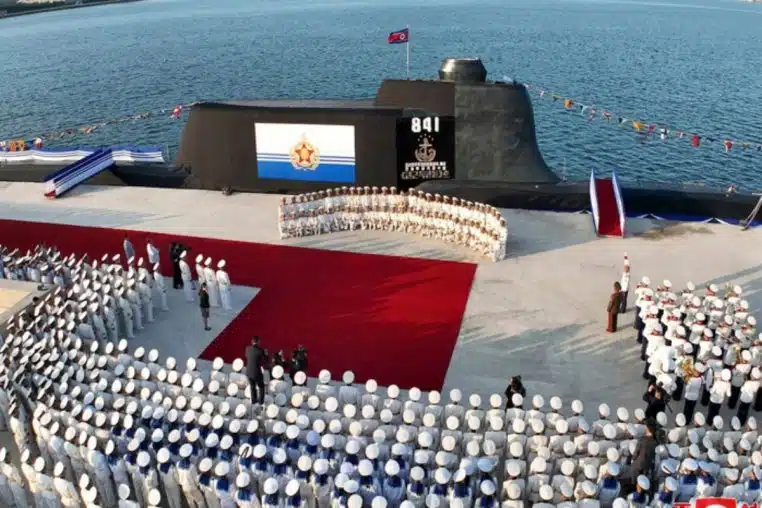

⚠️ Towards an Escalation of Tensions in the Asia-Pacific?
With the construction of this nuclear-powered submarine, North Korea sends a strong signal to the international community: it will not give up its military program and aims to enhance its nuclear deterrent capacity.
This development could trigger a chain reaction:
- An intensification of joint military exercises between the United States, South Korea, and Japan to counter this new threat.
- Increased diplomatic pressure on Pyongyang, possibly leading to stronger sanctions.
- Heightened tensions with Beijing and Moscow, which may be called to clarify their relations with North Korea.
As the world closely monitors Pyongyang’s advancements, one thing is certain: the arms race in the Asia-Pacific has just reached a critical new phase.
